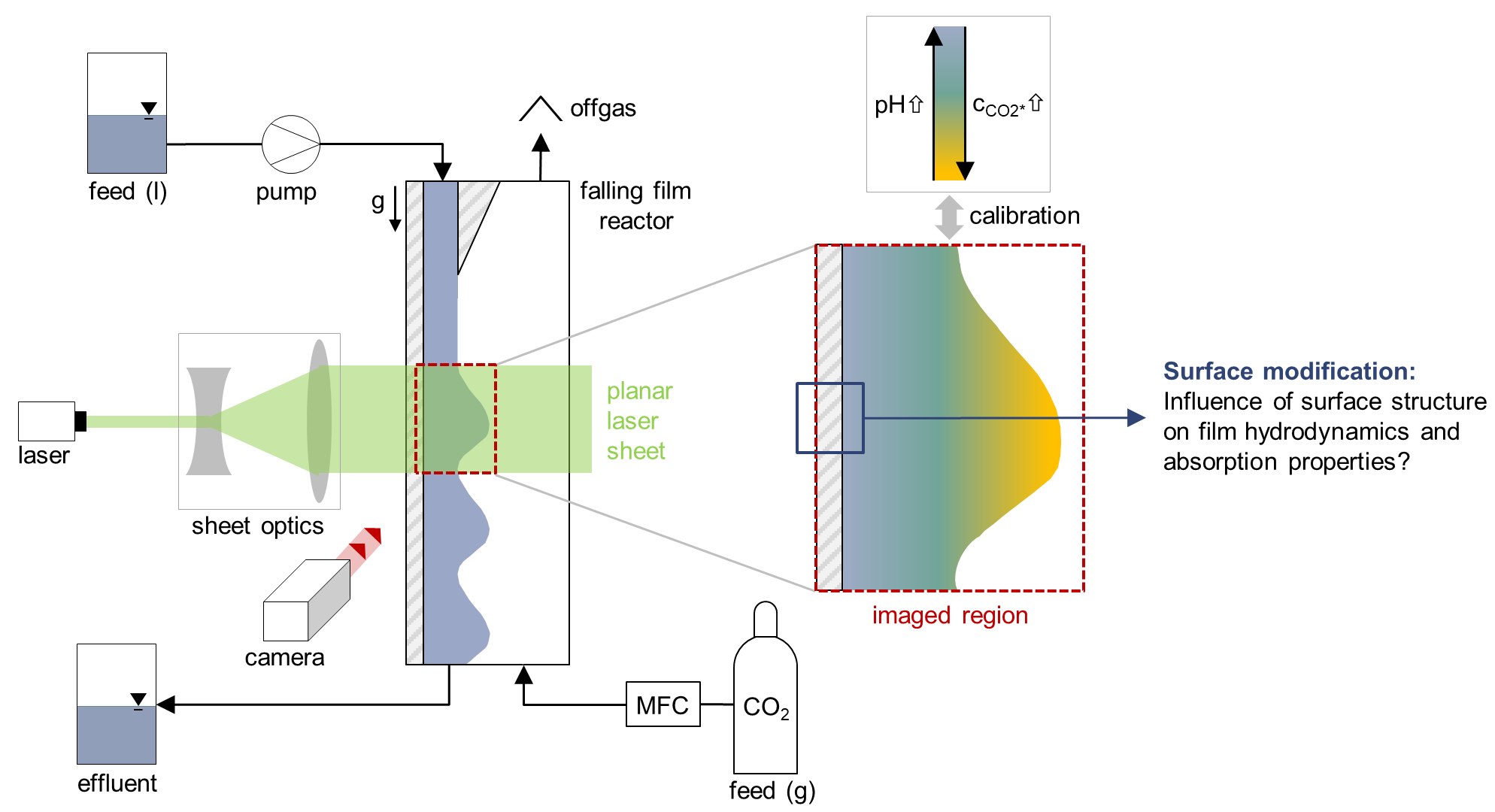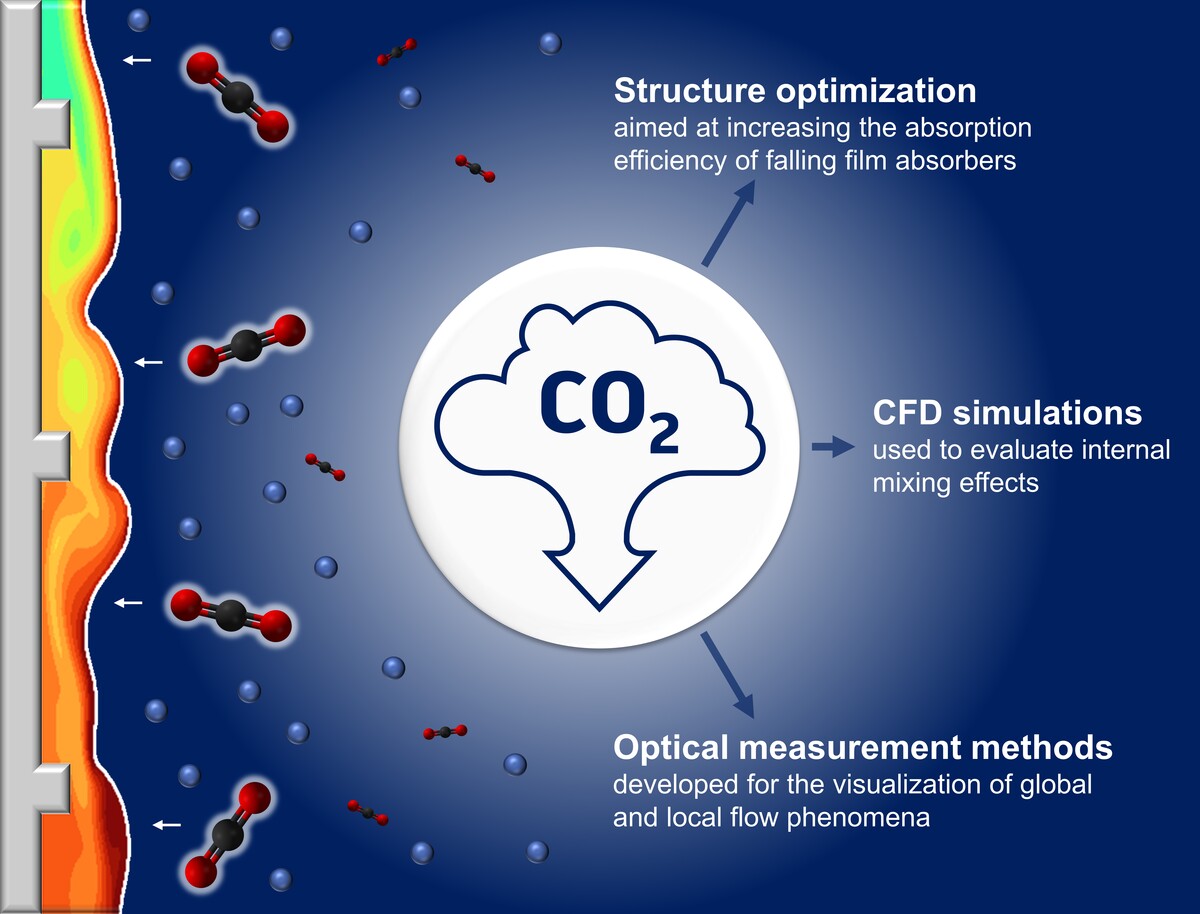Investigation of the reactive absorption of CO2 in a falling film reactor by laser induced fluorescence
Background:
To mitigate climate change, the anthropogenic emission of greenhouse gases such as carbon dioxide (CO2) has to be significantly reduced. However, the deep decarbonization of energy-intensive processing industries such as the steel or cement production entails considerable challenges. Thus, carbon capture, storage and utilization technologies are expected to play a key role in reducing the CO2 emissions of such “hard-toabate” sectors. Among the various carbon capture technologies, the reactive absorption of CO2 in gas-liquid contactors such as bubble column or falling film reactors is an effective approach for capturing the greenhouse gas from e.g. post-combustion flue gas streams.
Project:
The research project aims at improving the effectiveness of falling film reactors in capturing CO2 via reactive absorption from flue gases by inducing micro-mixing phenomena at the reactive gas-liquid interface through surface structure modifications. To this end, the influence of different process parameters such as the surface structure on the interaction between film hydrodynamics and reactive mass transport processes will be investigated experimentally at the Institute of Chemical Technology and Polymer Chemistry (ITCP, KIT). A simplified experimental setup is schematically illustrated in Figure 1.

In order to visualize the concentration distribution of the species absorbed in the liquid phase in a two-dimensional region of interest, a pH-sensitive planar laser induced fluorescence technique (pH-PLIF) will be employed. This measurement technique relies on adding pH-sensitive fluorescent tracer particles to the liquid solvent. The pH-dependent fluorescence intensity emitted by the fluorophore upon excitation with a laser is captured by a camera and can be converted to a corresponding pHvalue and absorbed species concentration according to predetermined calibrations. While the laser induced fluorescence technique can be employed to obtain temporally and spatially highly resolved data on local species distributions within the liquid film, a detailed knowledge of the inner film structures is indispensable for understanding the interaction between the film hydrodynamics and the reactive mass transport processes. The project is therefore conducted in close collaboration with the Institute of Thermal Turbomachinery (ITS, KIT) who complement the experimental investigations with detailed smoothed-particle hydrodynamics (SPH) simulations.
Contact: Prof. Dr. Olaf Deutschmann, Andrea Düll
Funding:


